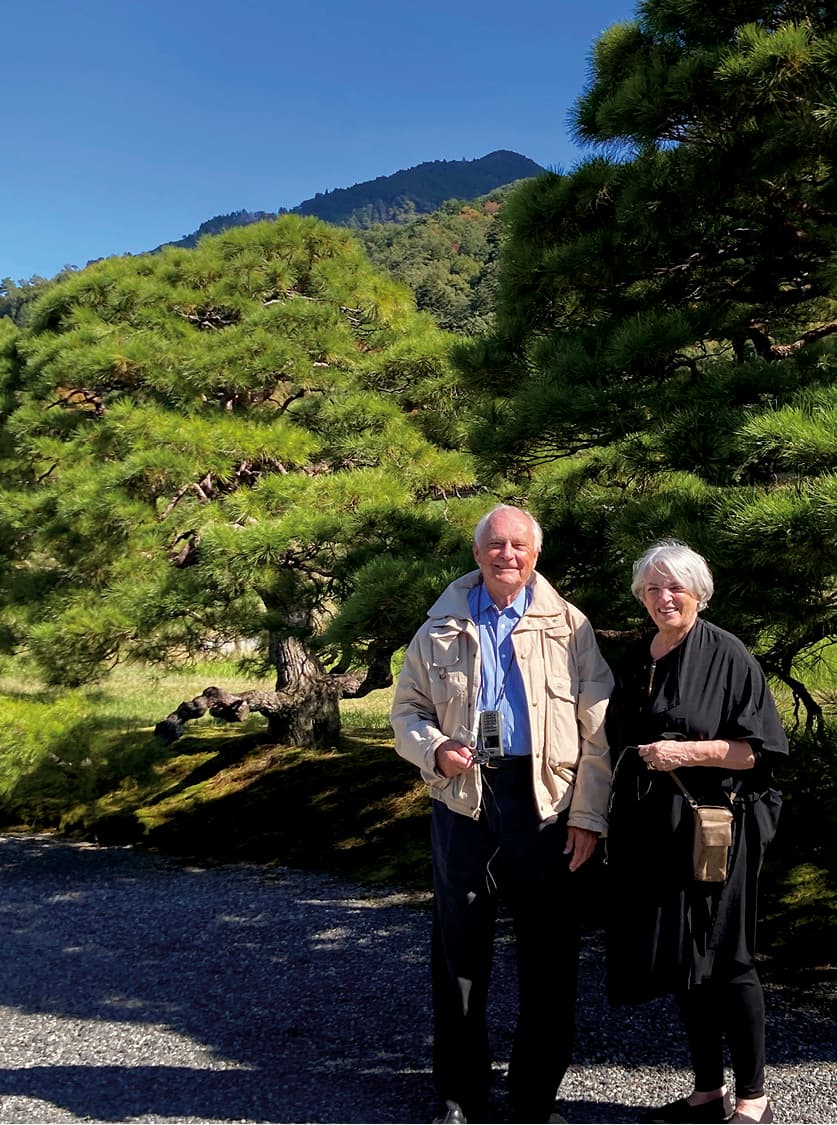Marc and Elizabeth Wilson
- Magazine Article
- Support

PHOTO COURTESY OF MARC AND ELIZABETH WILSON
The Cleveland Museum of Art receives generous support from its donors, making it possible for the museum to build on its legacy of excellence, continue its audience-centered approach, and fulfill its mission of creating transformative experiences through art, for the benefit of all the people forever. Recently, this tremendous donor support was exemplified by Marc and Elizabeth Wilson, who have announced their transformational gift to the museum. The Wilsons have very generously promised a $10 million gift from their estate to establish the Marc F. and Elizabeth F. Wilson Fund for the Acquisition of Works of Art at the CMA.
Marc grew up in Berea, Ohio, and graduated from Berea High School (now Berea-Midpark High School); he went on to earn his undergraduate and graduate degrees from Yale University, where his later studies in East Asian art history and Chinese helped prepare him for a museum career in those fields. The critical impetus for this career was ignited by a year at the CMA in art history courses, among which a yearlong course in Asian art taught by renowned CMA director Sherman Lee (1958–82) sealed Marc’s lifelong love of Asian art. After two years as an employee of the National Palace Museum in Taiwan, Marc accepted an offer for a curatorial position in Chinese art at Kansas City’s Nelson-Atkins Museum of Art. Thus began his distinguished career as an art historian, curator, and later the museum’s director (1982–2010), which coincided with one of the most dynamic periods of that museum’s history.
Elizabeth grew up in Berkley, California, as the daughter of a European émigré family with a tradition of supporting modern German painters and designers. From studying decorative art at the University of California, Berkeley, she enrolled in Berkeley’s doctoral program in Chinese and Japanese art history. A natural teacher, she spent years in the University of California system teaching before taking up a teaching post at the University of Denver, where she could concentrate on her specialty, painting of the Song dynasty (906–1279). After she and Marc married, a latent entrepreneurial bent led her to found Asiatica in Kansas City in 1977, which morphed from dealing in Asian antiques to designing, manufacturing, and marketing high-style clothes using Japanese fabrics new and old for women inspired by Japanese aesthetics. She continues traveling to Japan frequently, as she has for nearly 50 years.
The Wilsons live with works of art and objects of aesthetic interest in a contemporary house with a design that bespeaks their love of architecture, especially of old Italian hill towns and Japanese temples and gardens. They do not consider themselves collectors. Rather, they prefer to think of themselves as pursuing the expressive power found in great works of art from all cultures, which can enrich the lives of all who experience the works. Marc describes this power of art as “the concrete embodiment of a great moment of expressive achievement by another human being that represents a culture at a particular time.” It is this belief—that works of art of the highest quality illuminate the brighter side of human civilizations—that inspires the Wilsons to direct their munificent gift towards the acquisition of great works of art by the CMA. Their fund will give flexibility to the director of the CMA to purchase and acquire a wide range of significant artworks. The Wilsons intend the income from their endowment to either add to other funding or to be used on its own to continue building the CMA’s collection in perpetuity.
Marc and Elizabeth’s extraordinary generosity will have a permanent and lasting impact on the CMA and worldwide audiences for generations to come. Their gift will ensure a broad range of acquisitions, furthering the inclusiveness of the CMA—with significant works of art representing people and cultures from around the world. The Wilsons shared their outlook for the museum: “We have confidence in the future of the CMA.”